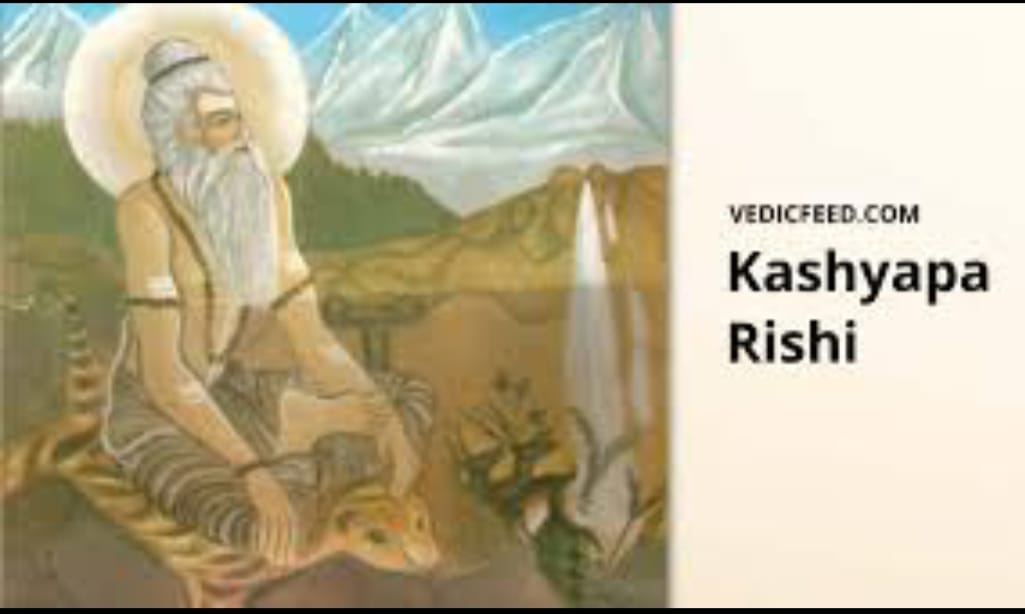The word Gotra comes from Sanskrit, originally meaning “cow pen,” but in Vedic tradition, it has a deeper meaning. It represents a sacred family line or clan that goes back to one of the ancient Rishis (sages). A Gotra is not just about biology or family trees. It connects us to a divine source of knowledge and wisdom. It is a spiritual identity and shows our bond with the Rishi Parampara — the line of sages who gave us the Vedas and taught us how to live a dharmic life.
The concept of Gotra comes from the Vedas, especially the Rigveda, and was explained further in the Dharma Shastras, Gṛhya Sūtras, and Smritis. It helped maintain order in society, spiritual discipline, and even moral and health standards. Gotra was a way to regulate marriages, maintain character, and ensure that knowledge and values were passed on properly.
The original Gotras come from the Saptarishis — the seven great sages of Vedic India:
- Atri
- Bharadvaja
- Gautama
- Jamadagni
- Kashyapa
- Vashishta
- Vishvamitra
Each Gotra traces back to one of these sages, who were not just teachers but spiritual fathers of ancient civilizations. They practiced tapasya (austerities), received Vedic knowledge, and laid down codes of living that we still follow today.
What is Gotra Vedia?
Gotra Vedia is the study, recordkeeping, and preservation of Gotras based on the Vedas. The word Vedia comes from Veda meaning “sacred knowledge.” It involves knowing your:
Gotra (clan of origin)
Pravara (names of sages linked to that Gotra)
Kul (family group)
This knowledge is important for properly performing rituals, weddings, and Samskaras (sacraments like birth, marriage, death).
In olden times, every household practiced Gotra Vedia. Priests and Acharyas in Gurukuls (Vedic schools) kept family records in oral and written form — some even in scrolls or Kul Pustakas (family books), which still exist in some Brahmin families today.
There are 49 main Gotras recognized in Hindu tradition. Each Gotra has sub-Gotras (Upa-Gotras) which a hundred plus. Every Gotra also includes a set of Pravaras — names of important sages from that lineage. These are chanted during weddings, Yajnas, and rituals to call upon our spiritual ancestors.
For example:
Bharadvaja Gotra includes the Pravaras: Bharadvaja, Angirasa, Bhaarhaspatya
Kashyapa Gotra includes: Kashyapa, Aavatsaara, Naidhruva
Gotra in Marriages
Gotra is exogamous, meaning a boy and girl from the same Gotra should not marry. This avoids genetic problems and keeps society in line with dharma. During weddings, both the bride and groom’s Gotras are mentioned and matched for compatibility.
Kashmiri Pandits and Gotra
For Kashmiri Pandits, Gotra is very important. It connects them to their ancient roots. Even though their surnames — like Bhat, Kaul, Razdan, Haksar, Saproo, Gurtu, Kak, etc. — may show location, profession, or title, the Gotra remains their true identity.
Kashmiri Pandit priests have kept Gotra Vedia alive for thousands of years. During marriages and even death rituals, the Gotra and Pravara are recited to connect the person to their Rishi ancestors and to seek blessings or help the soul attain peace.
Even during exile and migration, the Gotra system helped Kashmiri Pandits stay united and remember their heritage. It gave them strength and continuity during difficult times.
Why is Gotra Vedia important today?
It is a link between the past and present, between us and the divine. It reminds us that we are not alone — we are part of an ancient spiritual chain of knowledge, duty, and identity.
My humble message to all, especially to our youth:
Know your Gotra. Respect it. Record it for your children. Talk to your elders. Maintain your Kul Pustakas. Learn your Pravara. This is not just identity — it is pride, purpose, and your eternal connection to the Rishis.
Let us revive and pass on Gotra Vedia as a bright lamp of learning, identity, and spiritual power.
It is not just our history — it is our heritage.
Some of the 49 Main Gotras in Hindu Tradition:
Aangirasa, Aatreya, Agastya, Alambayana, Bhaaradwaja, Bhargava, Bhrigu, Chyavana, Dhananjaya, Gautama, Harita, Jamadagni, Kaakshivan, Kaashyapa, Kaushika, Katyayana, Maandavya, Mandukeya, Naidhruva, Parashara, Sandilya, Saankhyaayana, Saavarni, Shaandilya, Shaunaka, Shrivatsa, Shukla, Shukracharya, Srivatsa, Sumantu, Taittiriya, Upamanyu, Vaashishta, Vaikhanasa, Valmiki, Vamadeva, Vishvamitra, Vatsa, Vatsya, Vatsayana, Yaska, and others.
[Kundan Kashmiri]
Sevak, President, Kashmiri Pandit Conference (KPC) and social activist.
Email: kundankashmiri@gmail.com
Mobile: 880 2167955
